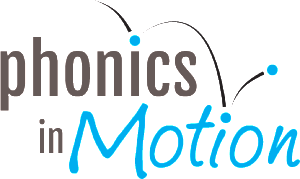Mastering Digraphs: Boosting Reading and Spelling Success
Digraphs play a vital role in developing strong reading abilities. They are the key to expanding vocabulary, improving reading fluency, and mastering accurate spelling. However, digraphs can pose significant challenges for both students and teachers.
For students, learning digraphs can be difficult due to the unique nature of these letter combinations. For teachers, the irregularities and complexities of digraphs make careful planning and implementation of instructional strategies crucial.
What are Digraphs?
Definition and Examples
Digraphs are pairs of letters that combine to create a single sound. Some of the sounds that students first encounter include “sh,” “ch,” “th,” “ph,” and “wh.” These letter combinations represent distinct phonemes and are frequently found at the beginning or end of words.
Importance in Reading
Understanding digraphs is crucial for developing strong reading skills. By recognizing and decoding these sounds, children can read a wider range of words accurately and fluently. Digraphs also play a significant role in spelling, as they help students represent sounds correctly in written language.
Why are Digraphs Important in Learning to Read?
Reason 1. Decoding Skills and Word Recognition
Digraphs are essential in phonics instruction as they teach the relationship between sounds and the letters that represent them. By introducing the sounds, educators enable students to decode words more efficiently and accurately. Recognizing digraphs expands children’s reading repertoire and bridges the gap between decoding and meaning.
Reason 2. Reading Fluency and Comprehension
By mastering these tricky sounds, students improve their reading fluency and comprehension. Digraphs appear in many words, and knowing them helps children decipher unfamiliar vocabulary and understand written text more effectively.
Reason 3. Spelling Accuracy
Understanding digraphs enhances students’ spelling abilities. When they recognize these patterns in words, they can accurately represent the corresponding sounds in their writing. This knowledge deepens their understanding of phonetic patterns and improves their overall spelling accuracy.
Why are Digraphs So Difficult?
Difficulty 1. Inconsistencies in Letter-Sound Correspondence
Digraphs deviate from the regular letter-sound correspondence found in many other phonetic patterns. The combination of letters in a digraph produces a sound that is different from the individual sounds of those letters. This inconsistency can be challenging for young readers who are still mastering the basics of phonics.
Difficulty 2. Similar Spellings and Sounds
Some digraphs share similar spellings or sounds with other letter combinations. For example, “ph” sounds like the letter “f,” while others can have different sounds in different words. These complexities can confuse learners and make it more difficult to internalize digraphs.
Difficulty 3 Lack of Explicit Instruction and Practice
Insufficient exposure and focused instruction on digraphs can contribute to difficulties in their mastery. Students need explicit teaching and ample practice opportunities to recognize and apply knowledge effectively. Without adequate support and practice, learners may struggle to incorporate these sounds into their reading and spelling skills.
Ways To Teach Digraphs
While there are endless ways to teach these sounds, two of the most effective ways are to teach through a multisensory approach and modeled reading and writing examples.
Method 1. Multisensory Activities
Incorporating multisensory activities engages students and enhances learning. Kinesthetic activities, such as using body movements to represent digraph sounds, reinforce learning and make it more interactive.
Method 2. Modeled Reading and Writing Practice
Reading and writing practice is crucial for reinforcing digraph knowledge. Teachers can provide digraph-rich texts for reading activities and encourage students to identify and highlight the patterns within the text. Engaging students in writing tasks that involve using challenging sounds, such as creating sentences or short stories through modeling, helps solidify their understanding and application of digraphs in written language.
How Phonics in Motion Teaches Digraphs
Phonics in Motion offers a unique and innovative approach to teaching digraphs that engages students on multiple levels. By integrating movement, music and poems, and visual cues, Phonics in Motion creates a dynamic learning experience that effectively teaches digraphs and enhances reading skills.
Method 1. Kinesthetic Motions
Phonics in Motion incorporates specific body movements to represent digraph sounds. Students mimic the motion associated with a digraph, such as train tracks for the “ch” digraph or creating binoculars with their hands for the “sh” digraph. These kinesthetic actions provide a memorable and physical representation of digraph sounds, reinforcing learning and aiding in retention. They also open the door for differentiated instruction in a classroom full of diverse learners.
Method 2. Poetry & Songs
Phonics in Motion utilizes songs and poems that highlight the sounds and their corresponding letters. These songs are designed to be engaging and enjoyable, helping students remember digraphs and associate them with the correct sounds. By using music, Phonics in Motion taps into auditory learning and aids in memory recall.
Method 3. Modeling & Visual Cues
Phonics in Motion incorporates modeling and visual cues to teach these sounds in the Language Calendar. These visual aids reinforce the connection between the letters and the corresponding sounds, providing an additional layer of support for learners. Since the Language Calendar integrates authentic learning experiences, students are able to make important connections. By integrating visual stimuli, the program caters to multisensory learners and helps solidify digraph recognition.








